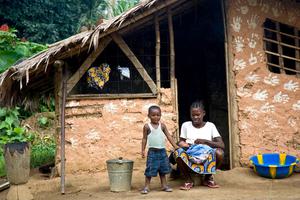Scientists estimate that if current food production methods continue, the world will likely need between 770,000 to 3.9 million square miles of new agricultural land by 2050 to feed the planet’s growing, wealthier population. Such agricultural expansion could destroy some of the habitat of almost 90 percent of terrestrial animal species, a new study has found, leading to a widespread biodiversity crisis.
“Agricultural expansion to feed an increasingly wealthy global population is likely to affect about 20,000 species of mammals, birds, and amphibians,” David Williams, an environmental scientist at the University of Leeds and lead author of the new study, said in a statement. “Our research suggests that without big changes to food systems, millions of square kilometers of natural habitats could be lost by 2050.”
Nearly 1,300 species will likely lose at least a quarter of their habitat to food production, according to the new study, published in the journal Nature Sustainability. The biggest losses in habitat are projected to take place in sub-Saharan Africa, particularly in the Rift Valley and equatorial West Africa, as well as in the Atlantic Rainforest of Brazil, in eastern Argentina, and in parts of South and Southeast Asia. Many of the species set to lose wide swaths of habitat to agriculture are not yet listed as threatened and likely not on conservationists’ radar, the research found.
Williams and his colleagues argue there are measures scientists and officials can take to prevent this agriculture-driven biodiversity decline. Raising crop yields would have the biggest impact on protecting species. Reducing demand for animal products, cutting food waste, and changing land-use decisions — such as directing food production away from biodiversity-rich ecosystems — could also help stem the loss of species.


